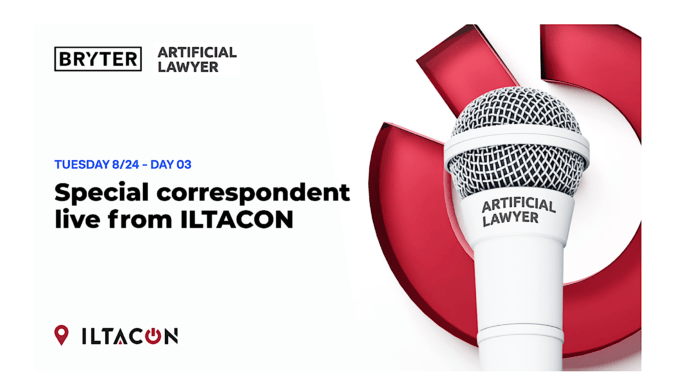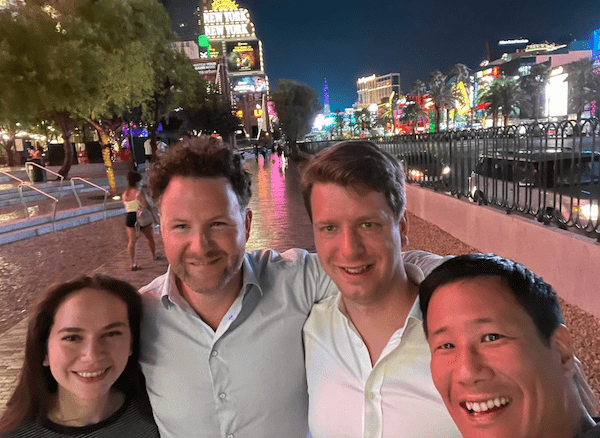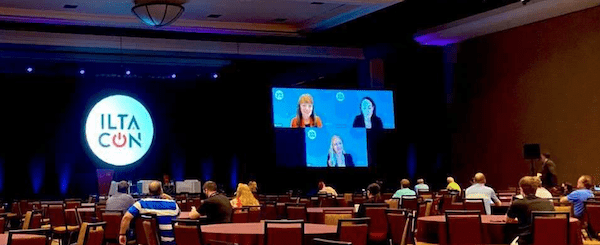
BRYTER is back for Day Three of ILTACON, one of the largest educational conferences in the world for legal professionals who work with technology. As special correspondents for Artificial Lawyer, we are reporting on the goings-on for everyone who couldn’t attend this year. Today we’re covering the events of Tuesday, August 24.

ILTACON is a conference built around the community it has created. With the community around ILTA, the hybrid model works out such that people can get access to the content virtually, but still find time around the sessions to discuss their experiences and reconnect in person – something everyone has been craving for a long time.
Rich Raether of Quarles & Brady described it to us like this: ‘ILTACON is not just a conference like a trade show, but an event around a community. I have participated in ILTACON regularly, and while this one is lower in terms of attendees, the spirit is still there.’
Have we seen clear trends on the technology side of presentations today? Not really, the developments of recent years continue: the roles of automation and enterprise app building are increasing, and the enabling of the legal function is a key theme, both in terms of technology and in the discussion around it.
Bridging domain expertise (legal) and technology skills (IT) is a recurring topic, solved through technology but also with more management and people-focused approaches, which the keynote of the day iterated on.
We now provide another run-down of some of the other fascinating sessions that we attended, many on the themes of looking to the future and doing more with less. Business and law professionals have a responsibility to innovate, and a pressure to deliver a multitude of requests as quickly as possible.
The first session, ‘Legal Business Design Challenge: A Case Study‘ (presented by Chris Graham, Global PMO Manager of Mayer Brown; David Rueff, Chief Client Solutions Group Officer at Baker Donelson Bearman Caldwell & Berkowitz; Josh Kubicki of the University of Richmond & Bold Duck Studio; Kim Craig, Co-Founder of Bold Duck Studio; and Samantha Galina from the University of Richmond School of Law), described the experience of the Legal Business Design Challenge at the University of Richmond.
Teams of students were paired with ‘innovators in residence’ (innovators in law firms and in-house legal departments) to identify pain points and opportunities to apply legal design thinking, which is a holistic approach to ‘solutioning’ opportunities identified in legal services and a valuable skill for students.
Next, Jeffrey Roach, President of Encoretech; Maria Smith, the Senior Manager of User Support at Munger, Tolles & Olson LLP; Michelle Depass, Senior Paralegal at Perkins Coie; Rex Balboa, a Business Analyst at Perkins Coie; and Sherry Kappel, Evangelist at Litera, discussed best practices in document co-authoring online in the session ‘All Together Now: Co-Authoring With or Without Your Document Management System’.
A key takeaway was that technology can make day-to-day work significantly more agile, but, like in most areas of business, communication and managed collaboration are key. Plus….on the subject of collaboration, siloed data is a blocking issue for many businesses.
The third session, ‘Data Silos are Killing Your Business: Identify, Plan, Unify‘ (Amy Wisinski, Sr. Manager of Marketing Data Analytics and Technology at Winston & Strawn; Brownie Davis, Software and Application Development Manager at Fish & Richardson.; Kate Cain, Director of Innovation and Design atFoundation Software Group; Mary Vacherweill, Sr. Technology Specialist for Faber Daeufer & Itrato; and Steven Magnuson, Business Intelligence Manager, Ballard Spahr), outlined a three-stage process for tackling data silos in businesses.
Essentially: identify the stakeholders, prioritise the required steps to gather data, and connect disparate data by identifying the commonality between them and creating a bridge between the two sources.
Finally, we sat in on the session ‘The Letters AI are in FAIR, But is Artificial Intelligence Fair?‘ by Alec Lovlein (Data Scientist at Orrick, Herrington & Sutcliffe LLP), Corey Ouellette (Lead, Toronto Labs Customer Centre, Thomson Reuters), Dawn Sepehr (Research Scientist, Thomson Reuters), Dhivya Chinnappa (Research Scientist, Thomson Reuters), and John Hudzina (Lead Research Scientist, Thomson Reuters).
That bias is built into AI is a well-established issue, but careful training with an eye for ethics can mitigate this, and users and developers of legal tools will have their own specific challenges to keep in mind.
The talk subject was interesting in and of itself, but so was the fact that it invited attendees to imagine a future where AI-powered legal tools are the norm.
[Note: looks like the one about AI bias has been a popular session! See earlier report and additional points from TJ Johnson’s Day 3 report. ]

After a day of informational discussion, the BRYTER team is full of energy for another day with the ILTACON community tomorrow. The overall atmosphere is that people are just happy to catch up after such a long time. We will return tomorrow for our final report from the event.
—
Thanks again to Michael Grupp and the BRYTER team for the report and photos.